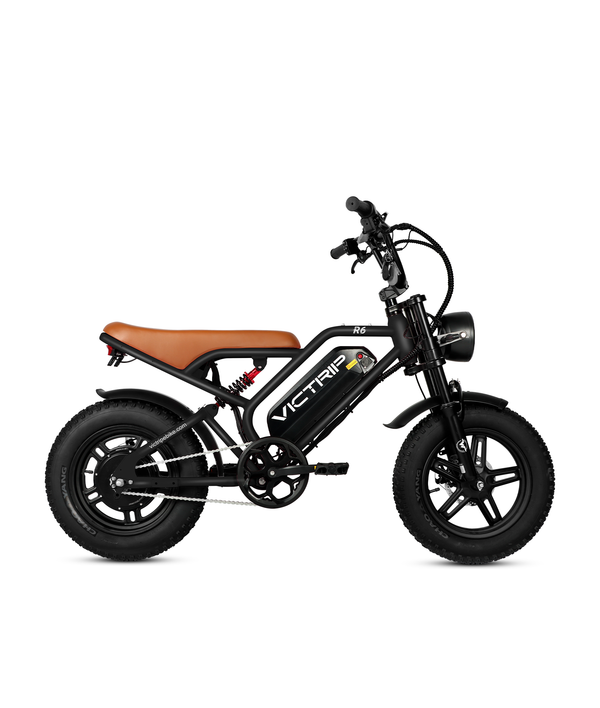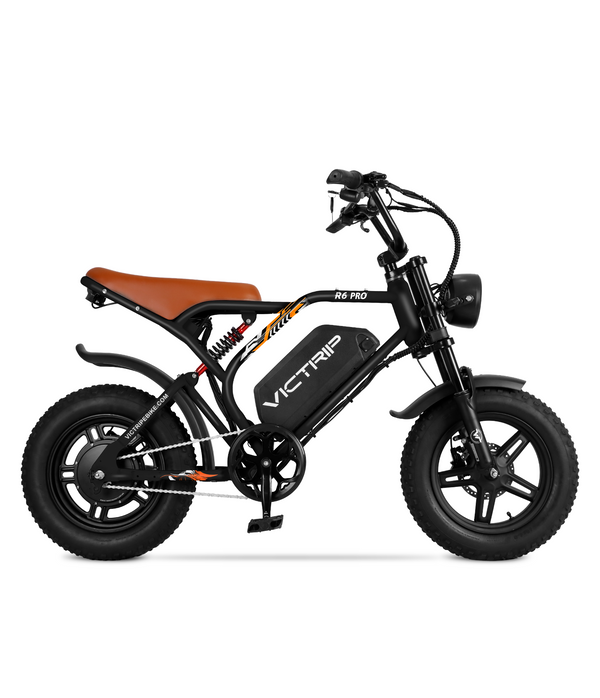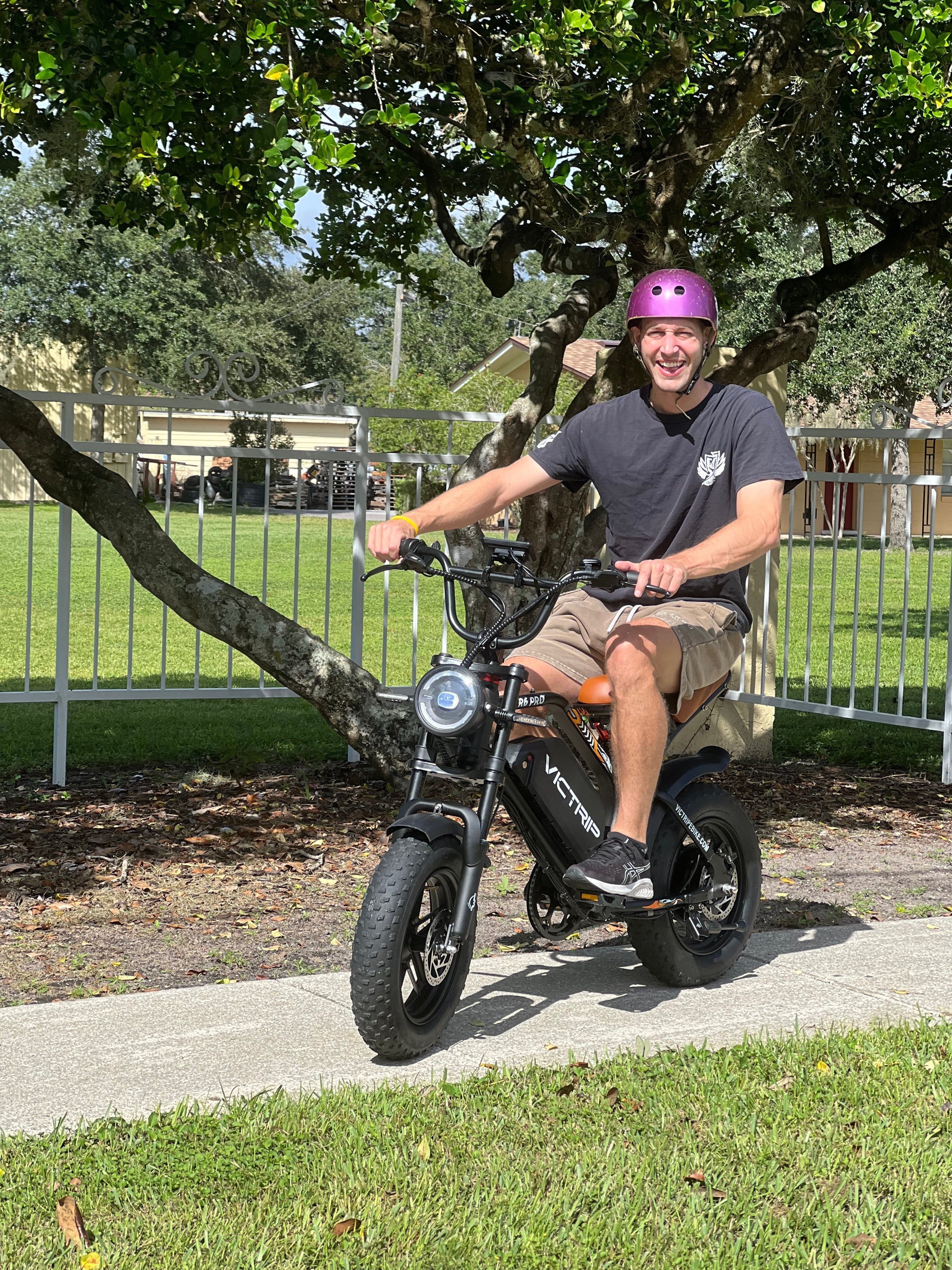
Students juggling classes, part-time work, and social life need transportation that’s fast, reliable, and cheap to run. Ebikes for students fit that bill: they cut commute times, shrink transportation costs, and reduce the hassle of parking — all while being kinder to the planet.
First, ebikes save time. Unlike buses that run on schedules you have to follow, an ebike gets you from dorm to lecture hall on your timetable. You won’t be circling for parking or waiting for a transfer. This is especially valuable when classes are back-to-back and every minute counts.
Second, they’re budget-friendly. After the upfront purchase, most running costs are limited to electricity (charging), occasional maintenance, and replacement wear items like tires and brake pads. Compared to owning a car, you’ll save on gas, registration, insurance, and campus parking fees. That’s real money for books, groceries, or coffee.
Third, ebikes blend health and low-impact exercise. Pedal-assist modes let you choose how much effort to invest: you’ll get cardiovascular benefits without overexerting yourself, which is great for busy schedules. Plus, they produce much lower emissions than cars or scooters.
Finally, they’re flexible. Ebikes for students work for errands, commuting, and quick trips across campus. They’re more weather-resistant and faster than walking, and they’re sometimes easier to park and store than larger scooters.
What students need in an ebike?
Before buying, students should prioritize a short checklist. Think about actual campus life — stairs, dorm storage, rainy days, and public transport connections.
Range & battery
Estimate daily miles: many students ride 3–10 miles per day. Choose a battery and range that covers typical daily usage with a margin (30–50% recommended). Manufacturer range numbers are useful, but they assume specific test conditions; real-world range varies by weight, terrain, and assist level. For example, an ebike with a 35–60 mile pedal-assist range should be more than adequate for most campus needs.
Weight, portability & storage
Dorm rooms are compact. Check an ebike’s weight and whether it can be rolled into a storage area or brought into an elevator. Heavier models (60–80+ lbs) are less portable but can offer more power and battery. If you’ll ride daily and have secure bike parking, a heavier model can still be right for you.
Safety features & lights
A bright headlight, taillight, reflective strips, and reliable brakes are must-haves. Hydraulic disc brakes are preferable for predictable stopping power, particularly in wet conditions.

Budget & payment options
Set a realistic budget. There are capable starter ebikes below $1,000 and more capable models in the $1,000–2,000 range. Look for student-friendly payment plans, seasonal discounts, and manufacturer promotions.
Accessories & practicality
Think about fenders, racks, lights, lock mounts, and whether you need a throttle. If you expect to carry books or groceries, a sturdy rear rack and panniers will be indispensable.
VICTRIP R6 — Budget pick: full breakdown
If you want an affordable, moped-style ebike that’s eye-catching and practical for short-to-medium commutes, the VICTRIP R6 Off Road Ebike is positioned as an attractive entry option.
VICTRIP R6 core specs (manufacturer)
-
Motor: 750W (peak ~1000W) rear hub brushless motor.
-
Battery: 48V 15Ah (listed 720Wh); electric-only range ≈ 35 miles; pedal-assist range up to about 60 miles (manufacturer numbers).
-
Top speed: ~28 mph (manufacturer).
-
Weight: net weight ≈ 72 lbs.
-
Max load: ~330 lbs.
These figures are taken from the VICTRIP official product page and product listing.
What that means for students: the R6 is powerful enough for hilly campuses, has a battery that will last multiple days of typical student commuting if you’re conservative with throttle, and usually fits comfortably into student budgets when on sale.
Pros for students
-
Very affordable entry price (often advertised around $799).
-
Moped-style frame offers comfort and a more upright riding position — good for visibility in traffic and for carrying backpacks.
-
Decent payload capacity for carrying a passenger or a heavy load of books.
-
Simple maintenance: hub motor and single-speed freewheel reduce drivetrain complexity.
Cons and realistic caveats
-
At ~72 lbs, it’s heavy to lift — not ideal if you must carry the bike up multiple flights of stairs.
-
Manufacturer ranges are optimistic; expect real-world electric-only range to drop with hills, heavier riders, or frequent throttle use.
-
If you’ll store the bike in a dorm room, measure the entryways and elevator capacity first.
Price, warranty & where to buy
VICTRIP's official store lists the R6 at around $799 (promotions vary). They typically offer free shipping, a 14-day trial in some markets, and a 1-year warranty (terms vary by region). Always check the product page for the latest price and policies before purchase.
TOP PICK

VICTRIP®R6 Moped Ebike for Teens
$799.00
VICTRIP R6 Pro — Upgraded pick: full breakdown
For students with longer commutes, heavier loads, or those who simply want extra range and higher top speed, the VICTRIP R6 Pro 1500W Ebike steps up with bigger battery and motor outputs.
R6 Pro core specs (manufacturer + recent review)
-
Motor: 1500W (rated; peak figures listed higher by some sources).
-
Battery: 48V 25Ah LG battery (approx. 1,200Wh).
-
Range: manufacturer / recent listings indicate 95+ mile pedal-assist range under ideal conditions; electric-only range varies by conditions.
-
Top speed: up to ~35 mph (where legal and supported).
-
Max load: up to ~400 lbs; heavier-duty build and suspension.
-
Tire size: 16"x4.0" fat tires, hydraulic disc brakes, front + rear suspension.
Implications for students: the R6 Pro 1500W Ebike gives more reserve — more range, more torque for hills, and a higher payload capacity. If you live off-campus, commute longer distances, or plan to carry heavy loads regularly, the R6 Pro is compelling.
Pros for students
-
Long range reduces “range anxiety” and the need to recharge daily.
-
Strong motor handles hills and heavier riders more confidently.
-
Moped-style features (fenders, signals, heavier frame) make it more commuter-ready in varied weather.
Cons and practical caveats
-
Higher price (commonly listed around $1,099 on official sales) — still competitive but costlier than the base R6.
-
Heavier and bulkier — not ideal for carrying up stairs or fitting into small dorm rooms.
-
Speeds up to ~35 mph may require awareness of local laws: some jurisdictions treat fast-throttle ebikes as mopeds, which affects licensing and helmet rules.
TOP PICK

VICTRIP®R6 Pro 1500W Moped Style EBike
$1,099.00
Side-by-side comparison
| Feature | VICTRIP R6 | VICTRIP R6 Pro |
|---|---|---|
| Typical Price (site sale) | ~$799. | ~$1,099 (sale). |
| Motor (rated) | 750W (peak ~1000W). | 1500W (peak higher). |
| Battery | 48V 15Ah (720Wh). | 48V 25Ah (approx 1200Wh) LG cell. |
| Electric-only range (manufacturer) | ~35 miles. | Up to 95 miles (ideal conditions). |
| Top speed | ~28 mph. | ~35 mph. |
| Weight | ~72 lbs. | Heavier (battery + frame) — listed specs show higher payload and battery weight. |
| Best for | Short–mid campus commutes, budget-conscious students. | Longer commutes, heavier riders, mixed urban/off-road use. |
Safety, maintenance, storage & campus rules
Safety is non-negotiable. Always use a certified helmet and follow local traffic rules. If the ebike is throttle-capable and reaches higher speeds (e.g., ~35 mph on the R6 Pro), check local classifications — some regions require registration or a moped-style license for faster electric vehicles.
Simple maintenance schedule
-
Before each ride: quick tire and brake check, ensure lights work.
-
Weekly: wipe down, check tire pressure, check bolts.
-
Monthly: inspect brake pads, drivetrain, and charging port; ensure firmware (if applicable) is updated.
-
Seasonal: deep clean, battery care (store at ~40–60% charge if not used), inspect suspension and hydraulic systems.
Charging & battery care
-
Use the manufacturer charger. Avoid fully depleting the battery regularly; lithium batteries last longest when kept between ~20%–80% state of charge for daily use. Charging time varies — listed VICTRIP charging times are roughly 5–7 hours for Pro batteries.
Parking & storage
-
Secure parking: use a heavy-duty lock and consider locking through the frame and both wheel(s) to an immovable object.
-
Dorm storage: ask housing about bike policies. If you must leave a bike outside, use weatherproof covers and indoor storage where possible.

Money-saving tips & student hacks
-
Buy during seasonal sales (back-to-school, holiday sales). VICTRIP and similar brands often run bundle deals.
-
Consider used/refurbished options from reputable dealers if you’re on a tight budget — but check battery health and warranty.
-
Invest in a good lock and insurance alternatives (some campuses have bike insurance or renter’s insurance add-ons).
-
DIY accessories: panniers and a rear rack let you carry heavy textbooks without straining your back.
-
Payment plans: check Klarna, Afterpay, or manufacturer financing if upfront cost is a stretch. VICTRIP’s store has listed installment options.
Conclusion — recommended pathways
If you’re a student on a tight budget who needs reliable campus transportation, the VICTRIP R6 Off Road Ebike is a sensible, wallet-friendly pick — it balances power and cost for short-to-medium rides.
If your commute is longer, you carry heavier loads, or you want more reserve range and higher top speed (and you’ve checked local regulations), the VICTRIP R6 Pro 1500W Ebike is a strong upgrade that delivers more range and torque.
Whatever you choose, prioritize safety gear (helmet, lights), know your campus rules, and adopt a simple maintenance routine — this will keep your ebike running well through semesters and seasons.
FAQs
Do I need a license to ride the R6 Pro?
If an ebike exceeds local speed/power thresholds (often >28 mph or >750W in some jurisdictions), it may be treated like a moped, requiring registration or a license. Always verify local law; R6 Pro’s ~35 mph capability may trigger additional rules.
What maintenance will I need to do myself?
You’ll need basic tasks like tire pressure checks, chain/drive cleaning (if chain-driven), and bolt tightening. Major issues (motor or battery service) are handled by certified technicians.
Is the higher price of the R6 Pro worth it for students?
If you commute longer distances, carry heavier loads, or want higher top speed and range, the R6 Pro’s larger battery and motor can be worth the extra cost. If your daily trips are short and storage is tight, the base R6 is a better budget choice.
How do I choose between throttle and pedal-assist?
Pedal-assist helps conserve battery and keeps you active; throttle is convenient for short bursts and starting from stops. Choose a model offering both if you value flexibility.




Share:
Can 3 Wheel Electric Bikes Replace Mobility Scooters
How Often Should You Charge Your 3 Wheel Electric Bike?